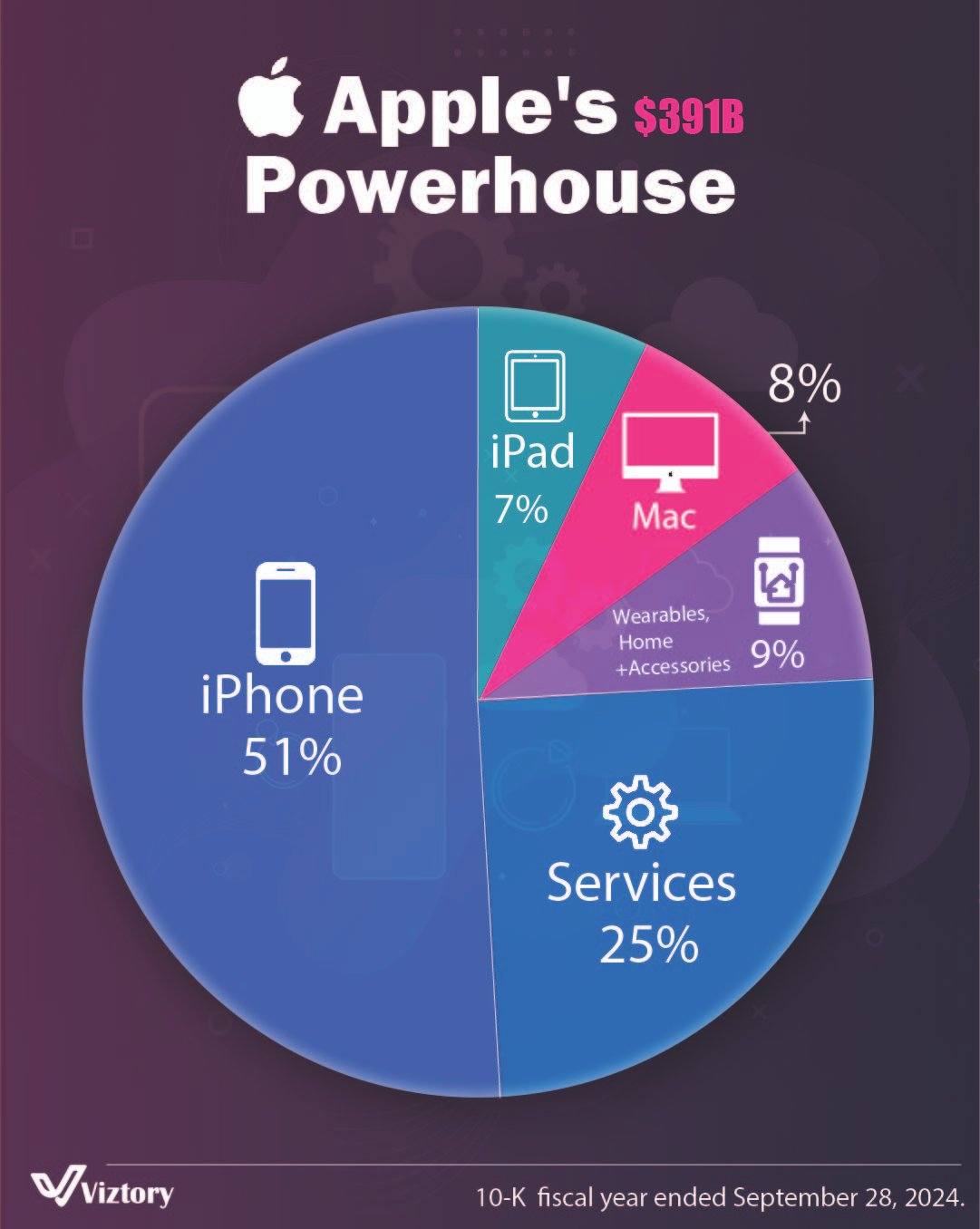Apple’s $391B Powerhouse
-
Jun, Sat, 2025
Revenue Composition and Key Segments
Apple’s revenue streams are divided across several major product categories, each contributing to its overall financial strength.
iPhone – 51%
The iPhone remains the cornerstone of Apple’s business. Generating more than half of the total revenue, it continues to serve as the most profitable product. Its consistent upgrades, ecosystem integration, and global demand have made it an essential device for both users and investors.
Services – 25%
Apple’s services segment has grown rapidly over recent years. It includes iCloud storage, Apple Music, App Store purchases, Apple TV+, AppleCare, and other subscriptions. These offerings have created recurring revenue streams and reduced dependence on hardware cycles.
Mac – 8%
Although Macs no longer dominate Apple’s portfolio, they remain important. The transition to Apple Silicon has reinvigorated the product line, offering higher performance, better energy efficiency, and closer integration with iOS devices.
Wearables, Home, and Accessories – 9%
This category includes products such as Apple Watch, AirPods, and smart home accessories. These devices complement Apple’s main products and enhance the overall user experience, while also opening doors to sectors like health and wellness.
iPad – 7%
The iPad remains a flexible tool used across education, business, and entertainment. Though not the highest contributor, it plays a key role in expanding Apple’s ecosystem to a broader range of users and use cases.
Strategic Observations
Apple’s revenue distribution reveals important insights about the company’s direction and priorities.
Balanced growth strategy
While the iPhone remains dominant, Apple is clearly investing in areas that promise long-term stability and growth, particularly services. The shift from product-based to service-based revenue reflects broader trends in the tech industry.Ecosystem expansion
Apple continues to build a tightly integrated ecosystem. Products such as the Apple Watch and AirPods are not standalone successes—they rely on the iPhone and enhance user engagement with Apple’s ecosystem.Resilience through diversification
Though still heavily reliant on the iPhone, Apple’s growing services and accessories segments provide a buffer against potential market saturation or product slowdowns.
Final Analysis
The $391 billion revenue figure underscores Apple’s unmatched ability to monetize its products and services. The company’s strength lies not just in individual devices, but in how each element fits into a larger, interconnected experience. As Apple continues to develop services and expand its ecosystem, it is moving from a traditional hardware company to a technology platform that shapes how people live, work, and communicate.
In conclusion, this snapshot of Apple’s financial structure highlights both the power of its legacy products and the momentum of its strategic innovations. Apple’s ability to adapt and expand beyond hardware positions it strongly for the next phase of technological leadership.

